Herbal bathing is a relaxing, enjoyable, and important self-care tool that has many healing benefits. This herbal bath for skin helps with skin irritation such as acne, rashes, red splotches, and minor cuts.
Let’s see what’s in our herbal bath for skin…
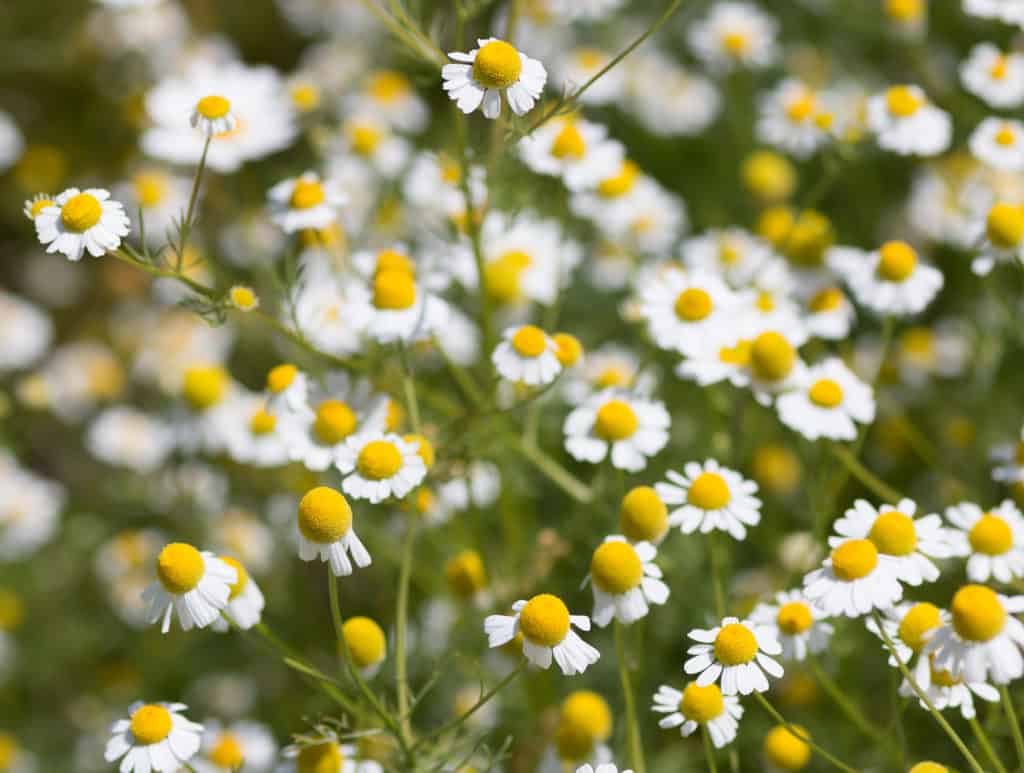
Chamomile (Matricaria recutita)
Chamomile is a timeless bathing remedy. It is calming, relaxing and soothing. Chamomile is also a superior skin healing herb. It helps to rejuvenate the skin and repairs damaged skin. It soothes and softens itchy skin and helps heal cuts and scratches.
Note: Chamomile is in the ragweed family. Use with caution if you have an allergic sensitivity to plants in that family.
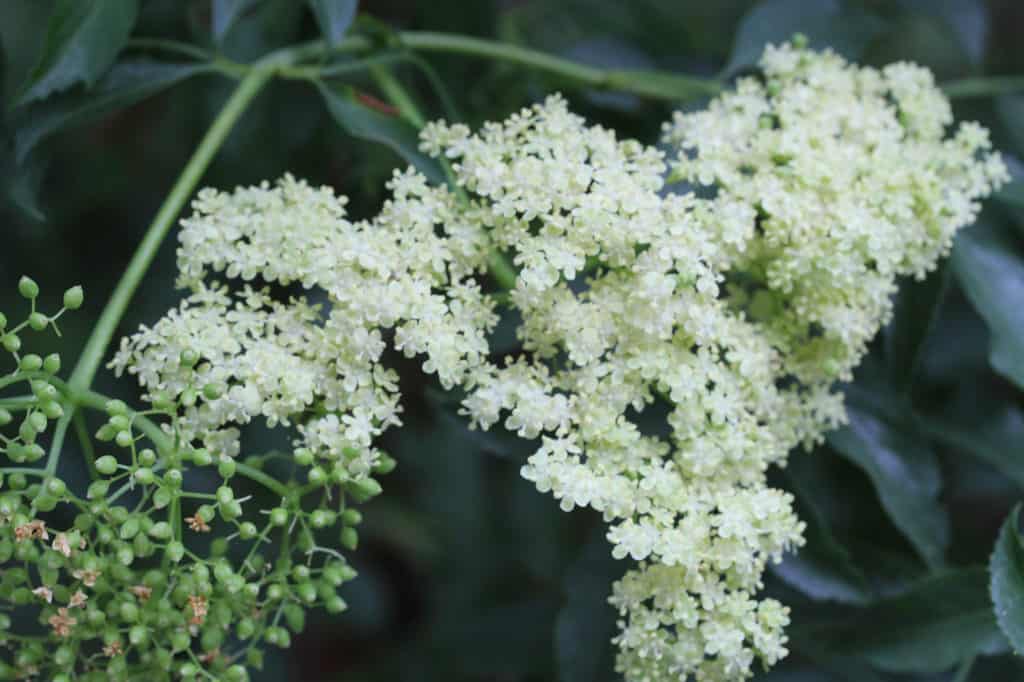
Elder Flower (Sambucus nigra or S. mexicana)
Skin-soothing elder flower clears heat and heals bruises, burns and sprains. It has an anti-inflammatory effect on the skin and is comforting for rashes and swelling. Elder flower is a vulnerary herb which means that it has a rejuvenative action on the skin. It helps clear acne, rashes and skin redness.
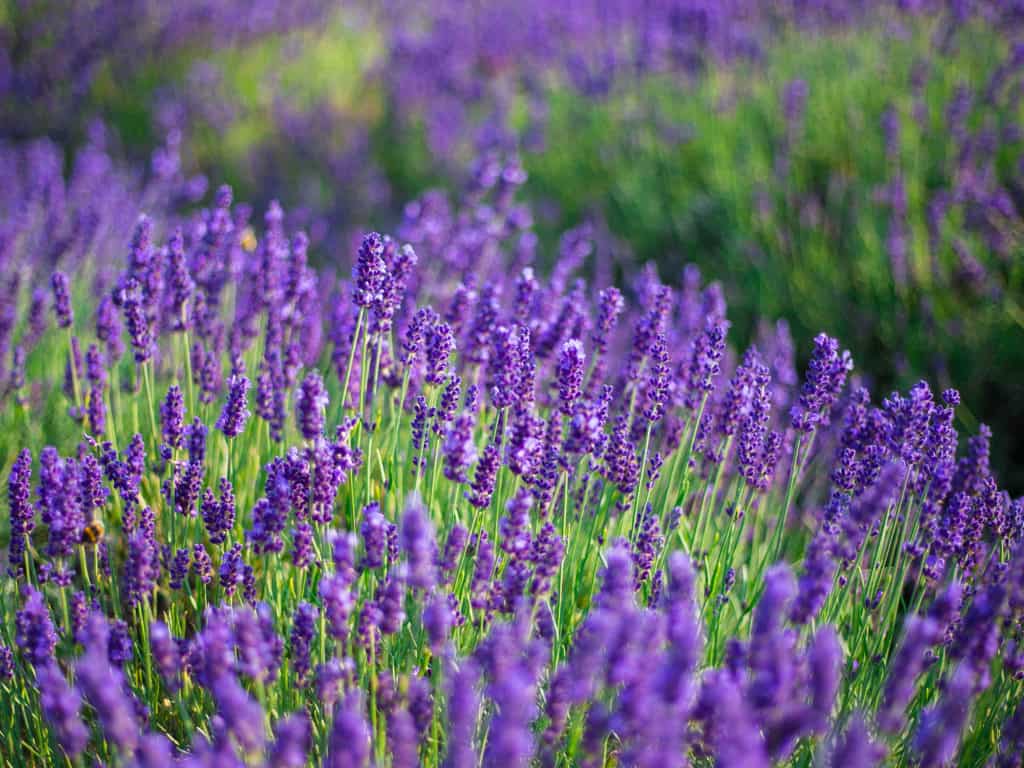
Lavender (Lavandula spp.)
We usually turn to lavender for its relaxing benefits, but it has many more uses! The antibacterial and anti-inflammatory properties of lavender make it a first rate healer for cuts and minor skin inflammation and infection. Lavender helps heal acne, eczema and minor burns. Think of taking a lavender herbal bath when you have any kind of skin inflammation. It cools your skin and calms your mind.
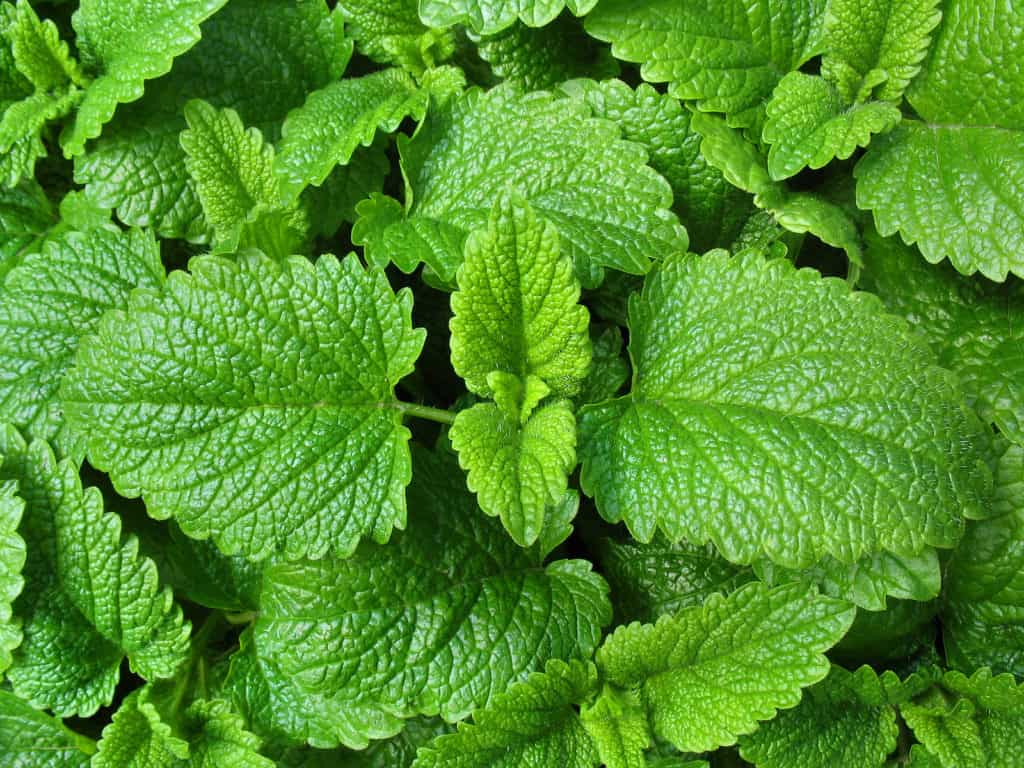
Lemon Balm (Melissa officinalis)
Lemon balm is a cooling and restorative herb that helps to calm the nerves and enhance your mood. Lemon balm is also very healing for the skin and makes a great herbal bath for scratches, scrapes and bruises. It acts as a topical anti-histamine and works wonders on bug bites and any skin inflammation.

Rose Geranium (Pelargonium graveolens)
Besides its lovely rose-like scent, rose geranium has a history of use for pain relief, antimicrobial and anti-fungal properties, and wound healing. Research has shown it to be effective for soothing acne, burns, eczema, and cuts.

Rose Petal (Rosa spp.)
Roses help to draw excessive heat from the body. They help to relieve inflammation associated with rashes, acne, insect bites and minor cuts. Any rose petal can be used in your bath as long as it is not sprayed with chemicals. As always, you want your herbs to be organic and pesticide free.
How to Make an Herbal Bath For Skin
To make an herbal bath for skin, you first make an herbal tea, and then you then add this tea to your bathtub. The recipe below gives you instructions for making a healing skin bath with loose herbs. The herbs can be fresh or dried.
You could also use this same combination of herbs to make herbal bath tea bags (with dried herbs) or a garden bath (with fresh herbs).
Ready to create even more healing herbal baths? Download the free ebook
Healing Skin Bath Tea
Ingredients
- 4 gallons water
- 1/2 cup fresh or dried chamomile
- 1/2 cup fresh or dried elder flowers
- 1/4 cup fresh or dried lavender
- 1/4 cup fresh or dried lemon balm
- 1/4 cup fresh or dried rose geranium
- 1/4 cup fresh or dried rose petals
Instructions
- Put water and herbs into a large pot.
- Bring water and herbs to a boil, turn off the heat, and let herbs infuse for 1 hour.
- Strain the herbs from the water, or leave them in the water if you want the herbs poured into the bathtub.
- Reheat tea.
- Pour strained or unstrained tea into drawn bath water.
I would love to hear from you! Have you ever tried an herbal bath for skin, relaxation, or another purpose? Please share in the comments below.
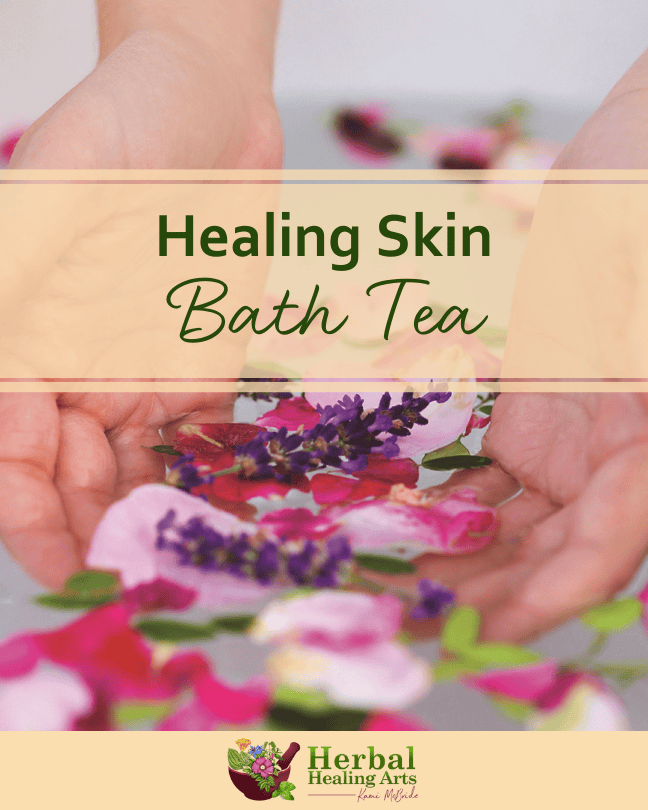

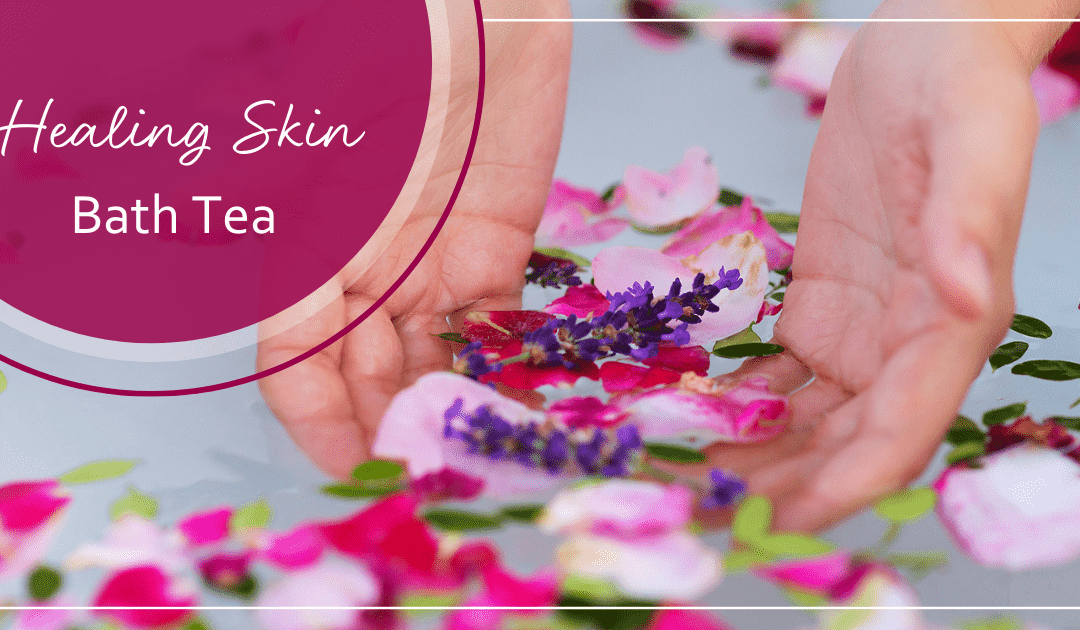


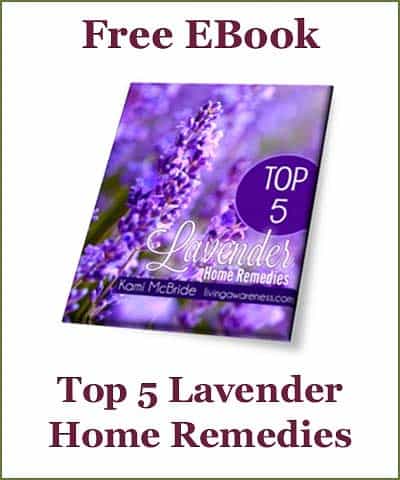

Thank you.
I am going to substitute calendula for rose geranium. Is that ok?
yes, my recipes are meant to be played with…
I have arthritis and often make a tea for my bath with many of the ingredients you’ve mentioned and a very healthy dose of arnica and epsom salts. A nice long soak in this always brings relief.
Thank you for sharing
Love this and think I’ll use this recipe for a foot soak! Thank you!